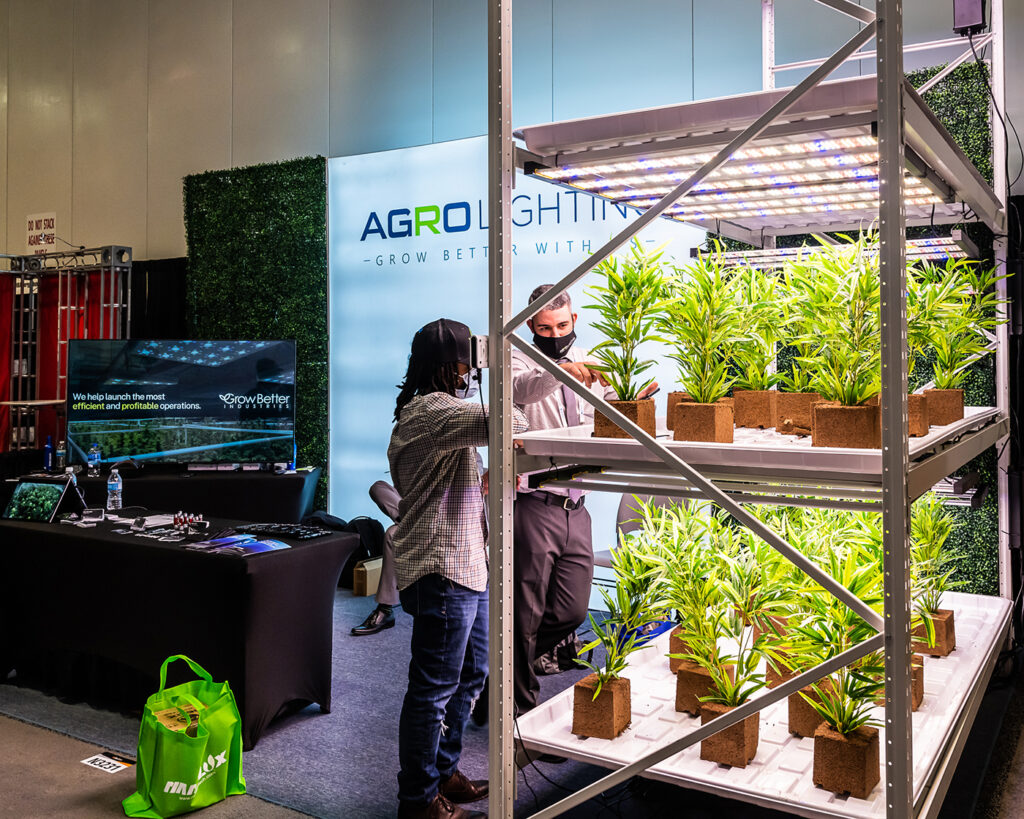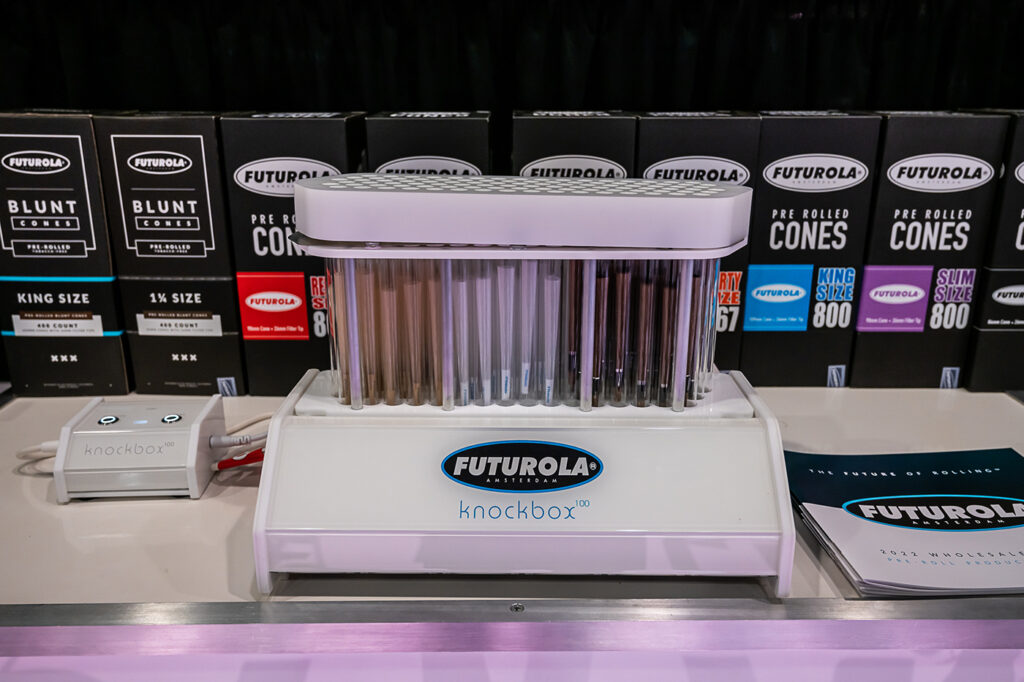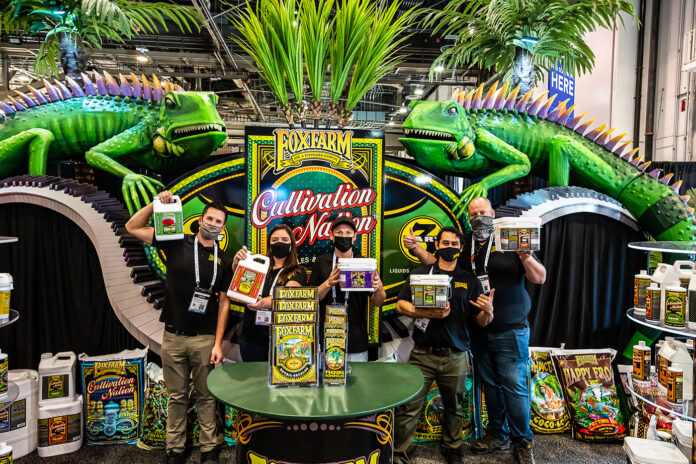It’s 2022, and cannabis has never been so legal. Throughout the United States, dispensaries are preparing their product mix for the duration of the year, highlighting the brands consumers connect with most. From the seasoned and experienced West Coast market to the emerging East Coast and everywhere in between, experts are assessing what’s selling and what isn’t to inform their displays and give local communities what they seek.
While some of this will vary from region to region, plenty of national cannabis trends require attention as the industry continues to unite and federal legalization continues to loom on the not-so-distant horizon.
There’s a lot to look forward to as the year progresses, whether you’re looking at the OG West Coast market, the East Coast, or developing regions in the middle of the country. We’ve broken down some of the hottest national trends and how they will trickle down into individual regions as they develop at their own pace and in their own unique style.
Legalization’s inexorable march
Even more U.S. states are eyeing legalization of some kind during the 2022 election cycle. For adult use, all eyes are on Rhode Island, Maryland, and Delaware, where recreational-use legalization bills are expected to pass with overwhelming support. On the medicinal front, Mississippi, Kansas, and North and South Carolina may legalize sales this year.
In Kansas, medical use almost was legalized in 2021, but a bill with bipartisan support stalled in the Senate. The state hopes to overachieve this year by legalizing both medical and adult use at the same time. Mississippi and the Carolinas face an uphill battle to pass medical bills with tight restrictions. If even one of the states moves forward with some form of legalization, the industry will gain a little more breathing room. Current and potential operators are keeping a close eye on progress until they can throw their chips on the table safely.

The industry solidifies its “recession-proof” reputation
A recession-proof industry can withstand even the toughest and most unpredictable national economic challenges, and cannabis proved itself capable during the past two years. Businesses across the spectrum were put to the ultimate test when the coronavirus pandemic caused mass population lockdowns and business closures in most of the U.S. Thanks to being declared an “essential business” early on, cannabis not only survived the carnage but thrived in the new environment.
With a general pandemic-driven uptick in illnesses like depression and anxiety, consumers needed access to the plant more than ever — especially medical patients, many of whom rely on cannabis to achieve a basic quality of life. To meet those needs, many brands and dispensaries began offering cannabis delivery and pre-ordering, which now are industry-standard even in jurisdictions that had resisted delivery pre-pandemic.
“In Virginia, we saw an incredible increase in online pre-orders,” said Andreas Neumann, chief creative director at bicoastal multistate operator Jushi Holdings Inc., which operates stores in five states. “Up to 85 percent of cannabis sales were online pre-orders, and at least 60 to 70 percent in Pennsylvania.
“This has established how the East Coast market will operate as it continues to develop,” he added. “People were trained throughout the pandemic to choose their products from home. In Massachusetts, we now have stores that only offer online pre-ordering. One of our biggest performers in the region is online-only.”
Meanwhile, in the well-established markets on the West Coast, consumers come to the industry with significant education. “Being such a mature market, consumers have been going into dispensaries and selecting products for over two decades now,” Neumann said. “That’s very different from consumers you see in newly legalized states, where they’re still learning.”
Brands all over the country used pandemic insights to inform how they connect with their unique markets and demographics. Mature brands reevaluated their images and operations, and emerging brands used the period to refine or redefine their brand identities.
“Dispensaries are always looking to build long-term relationships with their customers, and a major part of that is through the products they offer,” said Lane Radbill, chief marketing officer at Highsman. “In addition to high-quality and effective cannabis products, brands have the opportunity to introduce new ways for customers to build relationships with their dispensaries. Highsman, for example, is positioned at the intersection of sports and cannabis, giving dispensaries an opportunity to appeal to customers who are fans of either or both.”

Increased focus on eco-friendly production
Over the past few years, industry members have increased their dedication to limiting waste. Consumers across the spectrum—and especially cannabis consumers—increasingly demand sustainable solutions to everything from cultivation to manufacturing and packaging.
Expect to see single-use plastics replaced by recyclable materials like hemp with greater frequency. Regenerative farming practices and solar energy will become more common. Decision-makers at top brands like LOWD are on board with the trend.
“Considering what’s happening in the world as it relates to climate change, combined with the fact that this industry revolves around a plant, people are becoming more focused on sustainability,” said LOWD Chief Executive Officer Jesce Horton. “Here in Portland [Oregon], people have been ahead of the curve. The sustainability movement sort of sprouted from Portland, and it remains very important to us. As consumers become more educated around the country, this is a topic that will continue to grow.”
New technology in cultivation, retail operations, and product design already is supporting sustainability. The trend is especially noticeable in the vapes sector. “I think vapes overcame their bad-press moment with grace, and there’s some great new technology coming out as a result,” Neumann said, referring to a 2019 vaping-related public-health crisis the Centers for Disease Control and Prevention attempted to blame on cannabis. “[Vapes are] getting much closer to delivering like a real flower joint, and that’s the future right now.
“Vape sales are doing very well in Pennsylvania, which shows if your product is good, consistent, and affordable, people will flock to it,” he added.
Hemp stands to be a major player in the sustainability push, according to consultant and Last Prisoner Project cofounder Andrew DeAngelo. “Hempcrete, hemp blended with cotton. . . I think we’re going to see hemp working its way into luxury fashion by 2023 or 2024,” he said. “Fashion has a huge problem with sustainability, and the way the world is going, that’s not going to be an option anymore. Fashion is going to have to go green, and hemp will be a major part of that solution.”

More research
More opportunities for research go hand in hand with increased legalization, thanks to ballooning excise tax revenues. In the past few years, Michigan has spent almost $20 million in cannabis tax revenue to support studies on the benefits of medical cannabis for veterans with post-traumatic stress disorder, and New York’s legal market is funding state-run research attempting to define benefits and risks associated with cannabis use.
“The push on more substantial, peer-reviewed research is extremely important,” Horton said. “It’s going to help us educate consumers so they can ultimately get the effects and relief they want from our products.”
Tax-funded research already has borne fruit: In January, two Oregon universities released the results of a collaborative study indicating some cannabinoids may block COVID-19 at the cellular level. More research is needed to confirm the results and determine how to put the science into action, but it’s difficult to overstate the enormous impact such a discovery could have.
“You didn’t see academic institutions researching cannabis five years ago. It just couldn’t have happened,” said DeAngelo. “As more research is allowed to happen, we’re going to see more pharmaceutical products derived from cannabis and more of a focus on terpenes and their effects. I think we’ll also see more cannabinoids emerge and DNA testing on old-school genetics like the OG Kushes or Skunks.”
More equity, more expungement
Of all the issues facing the industry, perhaps the most complex is social equity. Progress toward diversity across all sectors has been indefensibly slow. Expungement, too, has been sluggish, and expungement directly affects the ability of potential equity players to achieve entry into a highly regulated industry. In most states, drug convictions disqualify equity applicants.
Thankfully, more states are including language addressing equity in their regulations. Newer jurisdictions including New York, New Jersey, and Alabama incorporated equity provisions in their legalization legislation.
But much work remains to be done—and some of it involves adjusting expectations, according to Horton. “We need to keep a realistic perspective on the goal of equity programs,” he said. “They aren’t meant to create a bunch of business owners. They’re meant to leave opportunities open so talented owners can get in and compete at the same level.
“We also have to ensure our buying reflects what we want to see from the industry by purchasing from diverse suppliers and putting those products on shelves so consumers can access them with ease,” he added.
Cannabis Trends in Products
As more states legalize and new cannabis research becomes available from around the globe, the industry has more room than ever for innovation. Many of each year’s hottest trends are reflected in product releases.
Cannabis trends vary quite a bit from region to region, depending on demographics, regulations, the overall vibe of each area’s unique cannabis community, and how consumers interact with the industry. Whether we’re talking about medical patients, adult-use consumers, CBD-only products, or the latest developments in cultivation and genetics, there’s no denying cannabis is both consumed and viewed in a remarkable variety of ways.
As the United States market continues to develop, it’s difficult to say whether any particular products will fade in demand. Between innovative flower cultivation techniques, new vape technology, and a heavier emphasis on terpene profiles and flavor, every category is expanding and improving. One thing sure to be left in the dust in 2022? Old-school, black-and-white stigmas.
Also gone are the days when cannabis conversations began and ended with indica versus sativa. Instead, consumers are more informed than ever, and the importance of proper dosage, terpene profiles, and cannabinoids is discussed more often and in greater depth. The shift to a stronger emphasis on consumer education is dictating what the market will look like for years to come, particularly what sort of products are being developed and prioritized.
With all that in mind, we’ve highlighted some of the hottest product trends of 2022 for every type of consumer. The first and most important step in taking action on trends is to know your region and its needs. From there, utilize this breakdown as a guide to curate a collection that will help you outperform your market this year.

Legalization took a leap forward in 2021, and no region was more active than the East Coast, which has begun to establish itself as a market with which to be reckoned. Thanks to the COVID-19 pandemic, consumers in this region have been trained to do their research at home, peruse products virtually, and utilize online pre-orders and cannabis delivery more than any other region in the nation.
“Now that the East Coast’s markets are becoming more mature, consumers — both medical and recreational — expect to see a growing variety of products within each existing category, as well as the introduction of new categories like edibles and concentrates,” said Victoria Walker, vice president of regional marketing at Columbia Care. “We’re also beginning to see brands resonate in more mature markets like the West Coast.
“In an industry that historically has struggled with supply-chain availability and consistency, smart brands are building affinity with their consumers and leaning in on their promise to deliver on their established product attributes, be it potency, flavor, or experience,” she continued. “By focusing on this type of brand development, we’re able to have better conversations with our consumers to understand what they want to see on shelves and make it a reality.”
A focus on brand identity isn’t unique to the West Coast, but that market often sets the precedent for cannabis trends and creates a nationwide ripple effect.
“Most cannabis trends vary from region to region, but one thing tying everything together is an emphasis on marketing strategy, creative strategy, and brand identity,” said Stephanie Bair-Garant, visual merchandising director at creative agency ZenGenius. “That’s what is bringing products to life right now.
“I think as dispensaries and brands compete, it always goes back to brand awareness and how we’re bringing attention to it and telling that brand’s story: where the product is coming from, who was involved in bringing it to life, et cetera,” she added. “There’s also a focus on merchandise, like branded T-shirts, hats, or lighters.”
Although 2022’s product trends vary from region to region, an overall increase in the quality and care behind production remains consistent throughout the nation.
“Flower is still the top-selling product, and consumer standards for flower quality are increasing,” Walker said. “We’re also seeing live-resin vape formulations become increasingly popular in certain markets, along with a lot more innovation in edibles and drink categories.”











